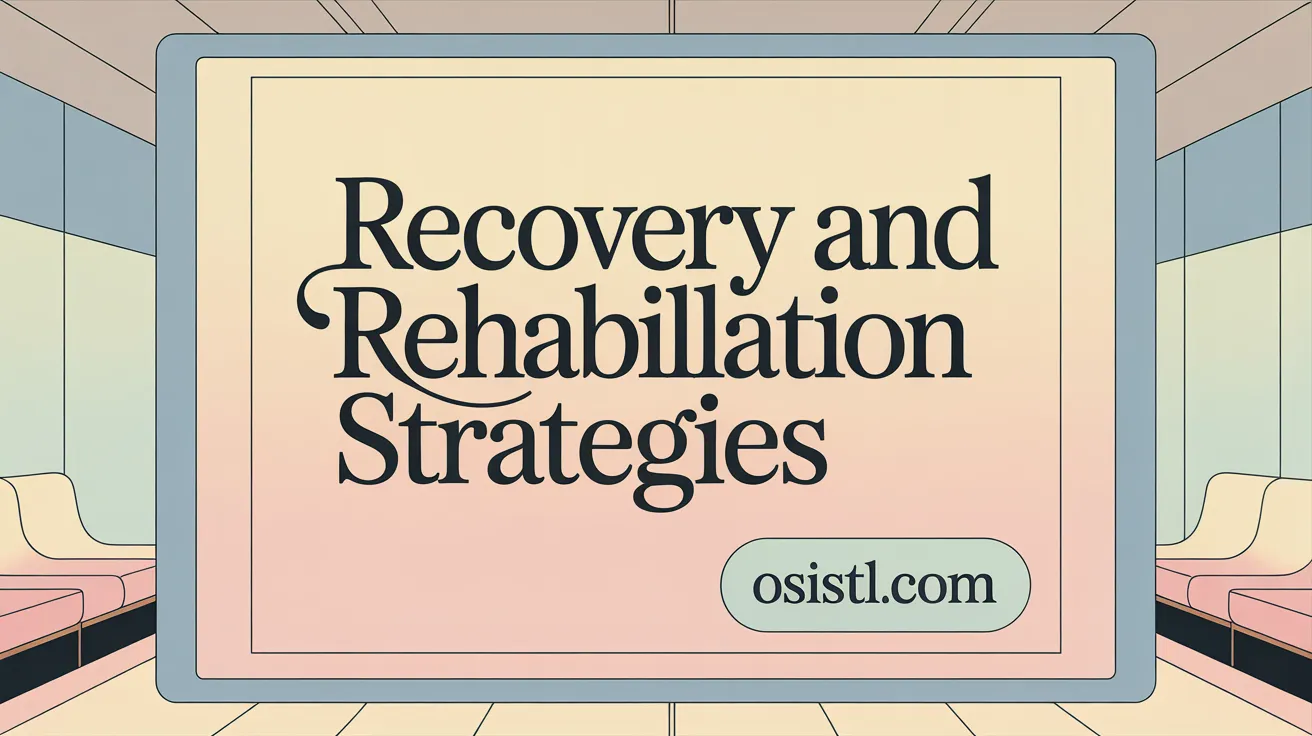Navigating Back Injury Treatment Under Workers’ Compensation
Back injuries represent a significant portion of workplace injuries, often leading to complex medical treatments and legal processes. Understanding comprehensive treatment options, medical guidelines, and the workers’ compensation claims process is vital for injured workers seeking effective recovery and fair compensation. This article explores essential aspects of managing and treating work-related back injuries covered by workers’ compensation, drawing on authoritative medical guidelines and practical insights to guide workers, medical professionals, and legal advocates alike.
Understanding Common Work-Related Back Injuries and Their Treatments

What are the common types of back injuries covered by workers' compensation and their respective treatment options?
Work-related back injuries are diverse and frequently covered by workers’ compensation insurance. These include muscle strains and sprains, herniated discs, nerve impingements such as pinched nerves, fractures like vertebral fractures, sciatica, and severe injuries involving the spinal cord that can lead to paralysis.
These injuries often result from incidents such as falls, improper lifting, repetitive motions, or extended periods of poor ergonomics and sitting. Diagnosing these injuries typically involves medical imaging techniques like X-rays, MRIs, or CT scans to confirm the extent and nature of the damage.
Treatment approaches vary based on injury severity and type. Mild strains and sprains are commonly managed with rest, physical therapy, pain medications, and chiropractic care. More complex cases, such as herniated discs or fractures, may require injections like epidural steroids, or surgical procedures including discectomy, laminectomy, or spinal fusion (Work-related back injuries in New Jersey).
Prompt medical evaluation and accurate documentation are essential for effective treatment (Early physical therapy for low back pain). Ongoing rehabilitation, which could include physical therapy and occupational therapy, supports long-term recovery (Medical Treatment for Back Injuries). Workers’ compensation benefits generally cover all necessary medical expenses, diagnostic tests, temporary or permanent disability payments, and rehabilitation costs, aiming to facilitate a safe return to work for injured employees (Workers' Compensation program benefits and medical care).
Diagnostic Evaluation and Medical Management in Workers’ Comp Back Injuries

What is involved in the diagnosis, symptom assessment, and medical management of back injuries under workers' compensation?
Diagnosing back injuries within the workers’ compensation framework involves a comprehensive clinical process. Healthcare providers start with a detailed history to determine the injury mechanism, identify risk factors, and notice any red flags that might indicate more severe conditions such as fractures or nerve damage.
Physical examinations are conducted to evaluate range of motion, neurological function, and pain areas. These assessments are essential in understanding the injury's impact on daily activities and guiding further testing.
Imaging studies play a vital role when structural damage is suspected. X-rays help identify fractures or degenerative changes, while MRIs provide detailed views of soft tissues, discs, and nerves, confirming conditions like herniated discs or spinal stenosis.
Symptom evaluation includes measuring pain severity, assessing functional limitations, and identifying neurological signs such as numbness or weakness. Psychosocial factors like depression, anxiety, or fear-avoidance behaviors are also critically evaluated, as they can significantly influence recovery outcomes.
Medical management aims to control pain and facilitate recovery. This includes the use of NSAIDs, corticosteroid injections, or other medications, depending on severity. Physical therapy is a cornerstone, focusing on ergonomic education, muscle strengthening, and activity modifications to prevent re-injury.
Workplace modifications are implemented to support recovery and minimize risk of further injury. Successful treatment often involves a multidisciplinary team—comprising physicians, physical therapists, and occupational specialists—and follows evidence-based clinical guidelines to ensure optimal results.
Effective coordination of care, early return-to-work planning, and adherence to best practices are crucial to reducing disability duration and promoting a safe, efficient recovery process for injured workers. For more detailed workers' compensation back injury treatment guidelines and management strategies, please refer to these comprehensive resources.
Non-Surgical and Surgical Treatment Options in Workers’ Compensation Cases

What non-surgical and surgical treatment options are available for back injuries in workers' compensation cases?
In workers' compensation cases involving back injuries, the initial approach generally emphasizes conservative, non-surgical treatments. These options include physical therapy to improve mobility and strengthen supporting muscles, medication management for pain relief, and lifestyle modifications such as weight management and ergonomic adjustments.
Injection therapies are commonly used to reduce inflammation and alleviate pain. These include steroid injections, trigger point injections, epidural injections, SI joint injections, and nerve blocks like medial branch blocks. Such procedures are intended to target specific pain sources and can provide significant symptom relief.
Alternative therapies also play a supportive role. Acupuncture, massage therapy, chiropractic manipulation, biofeedback, and electrical nerve stimulation are often employed to complement primary treatment plans, offering additional pain relief and functional improvements.
Psychological management techniques are increasingly recognized for their importance in chronic back pain. Practices such as mindfulness, meditation, and yoga can help patients cope with pain and emotional stress, which often accompanies long-term injuries.
When conservative management does not yield sufficient improvement, surgical interventions may be considered. Common procedures include discectomy to remove herniated disc material, spinal fusion to stabilize the spine, and laminectomy to relieve nerve pressure. Minimally invasive techniques, such as percutaneous discectomy, are also available and are preferred for suitable cases.
Deciding between non-surgical and surgical options depends on several factors, including the severity of the injury, response to initial therapies, patients’ functional limitations, and overall health status. Typically, healthcare providers aim to exhaust conservative treatments before recommending surgery, aligning with best practices for back injury treatment for effective recovery and return to work.
Medical Guidelines, Evidence-Based Protocols, and Documentation Standards

What are the medical guidelines and evidence-based protocols for treating back injuries in workers' compensation cases?
Official medical treatment guidelines, such as those issued by the New York State Workers’ Compensation Board, provide a structured framework for managing back injuries at work. These guidelines recommend comprehensive assessments, accurate diagnosis, and individualized treatment plans that often include physical therapy, medication, pain management, and, when necessary, surgical interventions like discectomy or spinal fusion.
Evidence-based clinical protocols support early mobilization and conservative treatment approaches, guided by current research and expert consensus. For example, initiating physical therapy within 14 days of injury has been shown to improve recovery outcomes and reduce total treatment costs as noted in early physical therapy benefits. Regular evaluations ensure treatment effectiveness and help determine when escalation of care is appropriate.
Additionally, multidisciplinary care involving medical providers, therapists, and case managers is essential for optimizing healing and return-to-work outcomes, as seen in back injury treatment team approaches. Adhering to these protocols enhances recovery, prevents chronic pain, and aligns with legal and insurance requirements.
What evidence-based practices and documentation standards are essential in treating work-related back injuries?
Implementing evidence-based practices involves following up-to-date clinical guidelines and employing validated assessment tools to monitor progress effectively. Proper documentation is critical; this includes detailed medical records covering diagnosis, treatment plans, patient progress, and outcomes. Such records substantiate medical decisions, facilitate claims processing, and provide legal protection.
Standardized documentation also supports continuity of care and ensures that treatment aligns with best practices. For example, recording early interventions like physical therapy, medication adjustments, and surgical procedures, along with patient responses, enables tailored, effective care.
Furthermore, maintaining accurate records of injury assessments and treatment milestones is vital for compliance with regulatory standards and enhances the likelihood of claim approval, as emphasized in workers' compensation back injury claims guidance. In summary, combining evidence-based practices with meticulous documentation leads to better patient outcomes and more efficient management of work-related back injuries.
Recovery Protocols, Rehabilitation, and Pain Management Strategies

What are the recommended recovery protocols and rehabilitation procedures for workers recovering from back injuries?
Recovery from back injuries follows a structured, phased approach aimed at restoring function while preventing further damage. Initially, management involves pain control through ice application, activity modification, and ergonomic adjustments at the workplace to avoid aggravating the injury. As pain subsides, the rehabilitation enters a gradual mobilization phase, where gentle movements and targeted physical therapy exercises are introduced.
Physical therapy techniques are tailored to individual needs and often include manual therapy, dry needling, ultrasound treatments, and modalities like heat or ice packs. These interventions help reduce pain, improve mobility, and strengthen the muscles supporting the spine.
Physical therapists assess occupational demands and develop customized treatment plans focused on restoring strength, flexibility, and posture. Education on proper body mechanics and activity modifications is integral to preventing re-injury.
Workplace ergonomic interventions such as ergonomic assessments and adjustments—like proper lifting techniques or the use of lifting aids—are critical for a safe return to work. Rehabilitation progresses gradually, ensuring the worker can handle essential job tasks without pain or strain.
The final stage involves a monitored return to work, often with modified duties if necessary. Long-term injury prevention is promoted through ongoing education on posture, ergonomics, and physical activity, supporting sustained recovery and reducing the likelihood of future injuries. For detailed guidelines, refer to the Mid and Low Back Injury Guidelines and Work-Related Back Injury Treatment Standards.
How can pain management and occupational therapy aid recovery for workers with back injuries?
Pain management plays a vital role in recovery, encompassing medications, physical modalities such as heat or cold therapy, and interventions like nerve blocks or acupuncture. Proper pain control helps workers participate actively in rehabilitation exercises and daily activities.
Occupational therapy complements medical treatments by focusing on improving functional capacity. Occupational therapists evaluate workplace tasks and recommend ergonomic modifications and adaptive strategies that facilitate a safe return to work. They may suggest equipment, workstation adjustments, or activity pacing techniques to reduce strain.
Together, pain management and occupational therapy not only alleviate discomfort but also empower injured workers to regain independence, restore work productivity, and minimize long-term disability risks. More information can be found in resources such as Workers' Compensation Back Injury Guidelines and Return to Work Policies.
Legal Rights, Claims Process, and Factors Influencing Settlement Negotiations
Workers dealing with back injuries at work should be aware of their legal rights and the proper procedures for filing claims under workers’ compensation. Employees have the right to prompt medical treatment and compensation for injuries sustained on the job. When a back injury occurs, it’s crucial to immediately report the incident to a supervisor and seek medical evaluation. Proper documentation of the injury, including incident reports, medical records, and physician evaluations, is vital for smooth claim processing.
The claims process involves several steps: injury reporting, medical assessment, filing the claim with the appropriate workers’ compensation board, and participating in dispute resolution if necessary. Workers should understand the importance of timely reporting and complete all required paperwork accurately to avoid delays or claim denials. If disagreements arise, dispute resolution mechanisms such as hearings can be utilized to resolve claims.
Settlement negotiations for workers’ comp back injury claims depend on multiple factors. The severity of the injury—such as sprains, herniated discs, fractures, or permanent impairments—influences treatment costs and compensation amounts. The ability of the worker to return to work, whether with restrictions or permanent disability, also affects settlement negotiations. More severe injuries with long-term effects tend to result in higher settlements.
Medical expenses, lost wages, and the impact on an individual’s quality of life, including pain and suffering, are critical considerations during negotiation. Legal representation can greatly assist in maximizing benefits, as experienced attorneys evaluate medical evidence, understand applicable laws, and advocate for fair settlements. The timing of settlement offers generally coincides with reaching maximum medical improvement (MMI), after which it’s easier to determine permanent disability ratings and long-term costs.
Settlement amounts can vary significantly based on the case complexity and jurisdiction. In some states like California, average settlements for severe back injuries can reach around $67,500, but this figure depends on factors such as injury severity, treatment requirements, and legal considerations. The Workers’ Compensation Appeals Board oversees the approval process, and thorough documentation and legal counsel are essential for achieving a fair resolution.
Maximizing Recovery and Compensation for Work-Related Back Injuries
Successfully navigating the complexities of workers’ compensation for back injuries requires a holistic understanding of medical treatment options, evidence-based care protocols, effective rehabilitation practices, and legal procedures. Prompt injury reporting, adherence to standardized medical guidelines, and comprehensive documentation are cornerstones for both improved recovery outcomes and facilitating fair compensation. By staying informed about treatment alternatives—from conservative therapies to surgical interventions—and understanding their rights and the claims process, injured workers can better advocate for themselves. Collaboration among healthcare providers, employers, insurers, and legal professionals further supports timely return to work and quality of life. Ultimately, integrating medical and legal knowledge empowers workers to achieve optimal health, financial security, and workplace reintegration after a work-related back injury.
